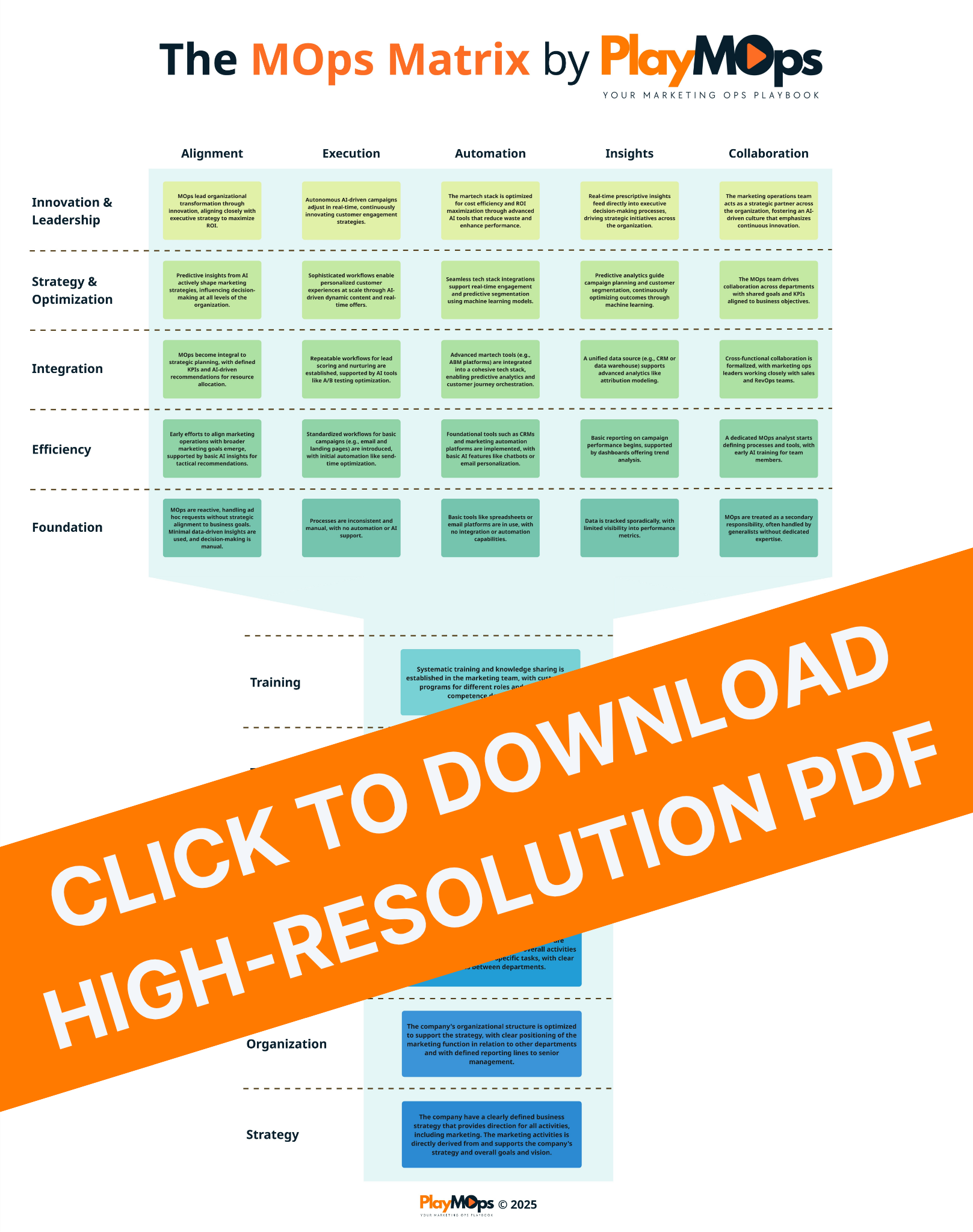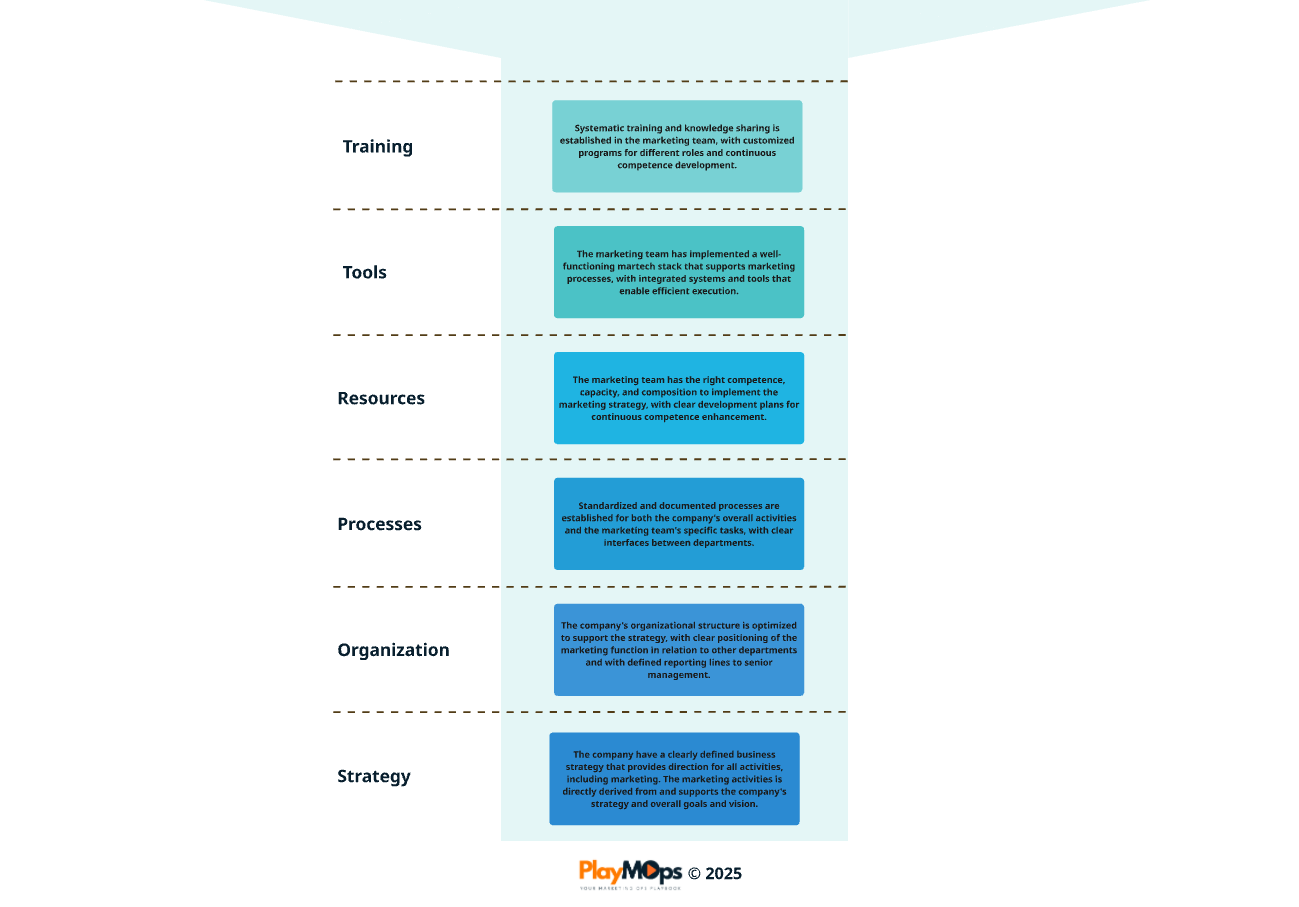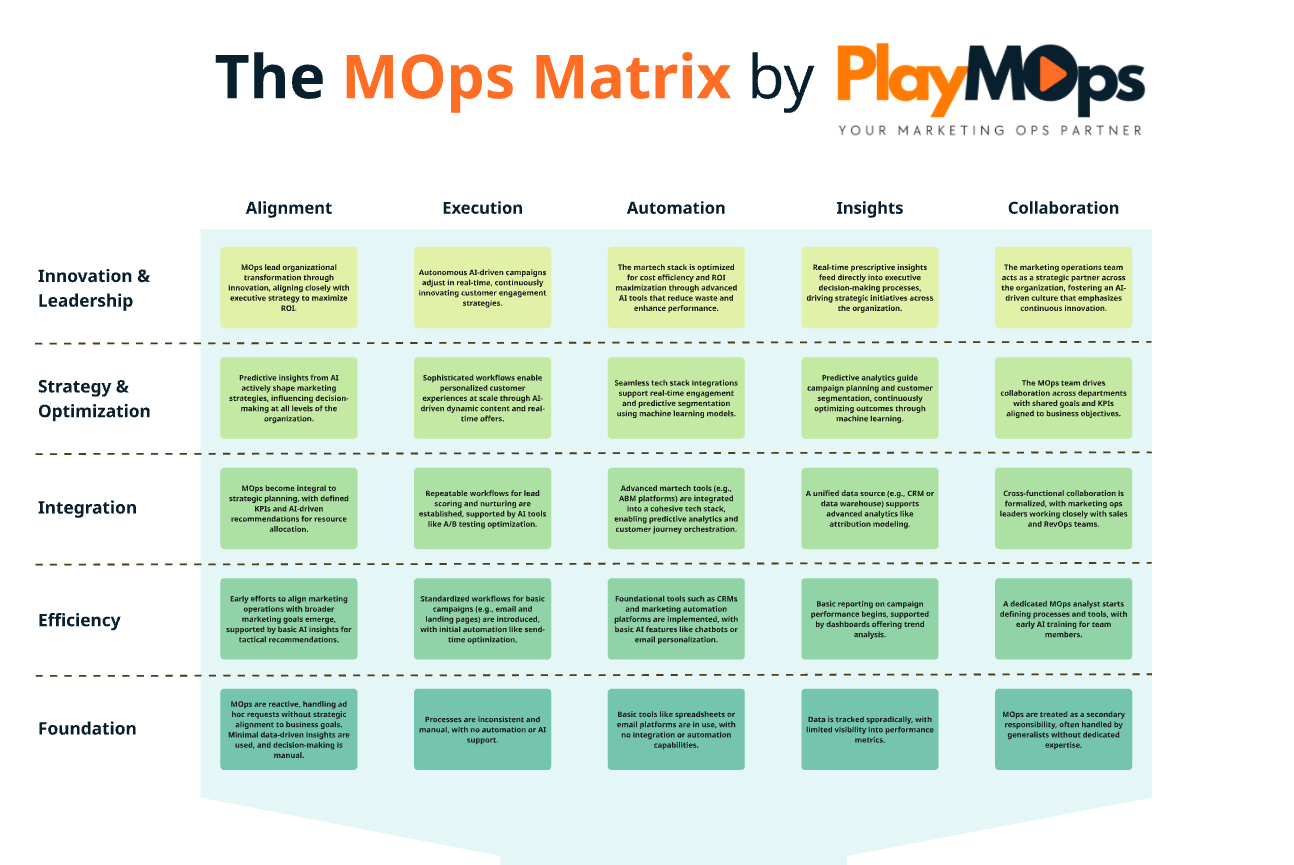The MOps Matrix by PlayMOps
Why I created the MOps Matrix
Modern marketing teams often face challenges with unclear strategy, fragmented processes, and underutilized resources.
The MOps Matrix was developed to provide a clear, actionable roadmap for building and scaling effective marketing operations. It helps teams assess their current maturity, identify strengths and gaps, and prioritize the right next steps for sustainable growth and measurable results.
What Can the MOps Matrix Be Used For?
- Assessing Maturity:
Visualize your current state across all key areas of marketing operations. - Prioritizing Actions:
Identify which foundational or advanced areas need attention first. - Driving Improvement:
Use the matrix as a step-by-step guide for continuous development. - Team Alignment:
Create a shared language and understanding across teams and functions. - Tracking Progress:
Regularly revisit the matrix to measure improvement and set new goals.

How to Use the MOps Matrix
- Self-Assessment:
Map your current state across all 11 levels and five dimensions. - Identify Gaps:
See where you’re strong and where you need to improve. - Prioritize Actions:
Focus on foundational gaps first, then move up the scale. - Track Progress:
Use the matrix as a living tool, review and update regularly. - Align the Team:
Share the matrix to create a common understanding and drive collective progress.
Ready to dive deeper?
Explore each level in detail on the dedicated subpages, and start building a marketing operations function that delivers clarity, control, and real business growth.
First, download your copy of the high-resolution PDF of the MOps Matrix:
Then c
Then click below to go to level 1 and start assessing your MOps maturity.
The Two Main Sections of the MOps Matrix
The MOps Matrix is structured as an 11-level maturity scale, divided into two main sections:
- Foundational Levels (1-6)
- Capability Levels (7-11)
Each level builds on the previous, guiding your team from basic structure to advanced leadership and innovation
Foundational Levels (1-6)
These six levels form the essential groundwork for any marketing operations function.
Each level must be in place before moving up the maturity scale.

1. Strategy
Ensure your marketing strategy is clearly defined, aligned with business goals, and understood by all stakeholders.
2. Organization
Establish a team structure with clear roles, responsibilities, and lines of communication.
Read more about Organization ->
3. Processes
Document and standardize key workflows for campaign execution, reporting, and collaboration.
4. Resources
Secure the right people, skills, and capacity to execute your marketing plans effectively.
5. Tools
Implement and maintain essential marketing technologies that support your goals and are accessible to the team.
6. Training
Provide ongoing training and knowledge sharing to ensure your team stays up to date and continuously improves.
Capability Levels (7-11)
The top five levels represent advanced capabilities, each described across five operational dimensions:
Alignment, Execution, Automation, Insights, and Collaboration.

7. Foundation
At this level, your foundational elements are robust and scalable across all dimensions. The team is aligned, processes are executed efficiently, automation is in place, insights are accessible, and collaboration is embedded in daily work.
8. Efficiency
Efficiency is achieved through optimized workflows, clear communication, and effective use of automation and data. Teams work smarter, not harder, and collaboration ensures resources are used wisely.
9. Integration
Integration connects goals, systems, and data. Teams synchronize their efforts, tools are seamlessly connected, and unified reporting supports better decision-making. Collaboration is focused on continuous process improvement.
Read more about Integration ->
10. Strategy & Optimization
Teams move from reactive to proactive, using data-driven planning and continuous optimization. Strategic alignment, scalable execution, automated testing, and real-time insights drive ongoing improvement, supported by a culture of shared feedback.
Read more about Strategy & Optimization ->
11. Innovation & Leadership
The organization leads in marketing operations innovation. Teams are aligned around a shared vision, execute company-wide initiatives, leverage advanced automation, and foster a culture of cross-functional leadership and knowledge sharing.
